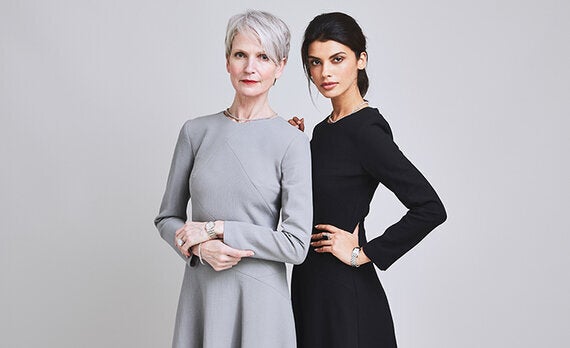When I left a long career in finance to set up my own officewear label, Rose & Willard, one of my first decisions was to always show honest and diverse images of women. No caricatures, no sexing up and nothing demure. After all, the literal meaning of Rose & Willard is Feminine & Bold.
We have deliberately chosen models who are strong and positive representations of difference - race, disability, model health advocacy and non-conforming. And we have only promoted positive body language.
We knew that this type of imagery was out of the ordinary and might take some adjusting to but what was more interesting was what this told us about women's shopping behaviour.
Our website and newsletter heat maps showed that our most conventional-looking model was, by far, the most clicked on. To test whether this was because of the model or what she was wearing we sent a newsletter to our customers in which we posted images of this model alongside our size 16 model of colour. Both wore the same top with the latter wearing the more popular blue. They wore the same skirt. Over 90% of the clicks for that newsletter were on the former model. We undertook similar tests and the results were always the same.

Data is a very valuable commodity. All companies analyse customer behaviour patterns closely and will look to invest where they see the best return. The data was telling us to reject diverse models.
An ex-member of staff was once a booker for a world-renowned modelling agency. He told us that non-white and plus size models were much less likely to be booked by fashion brands because customers didn't buy from their images. This comment bears so much significance for me now.
No doubt the way we shop reflects a certain subconscious conditioning that makes us react more readily to images with which we are more familiar.
There is also aspiration. Brands don't just sell products, they sell lifestyles. Marketing experts have told us that conventional models meet the more widely-acknowledge beauty standards that people aspire to and that this is why they are the most commercial.
But as well as a lifestyle brand, we are a brand of action. We are committed to what we believe in. I spent years in my City career lacking the courage to stand up for myself. I'm done with that.
There is a desire for change. A recent report stated that 80% of women in the US say that images of women in the media make them feel insecure.
If women and girls can be encouraged to click on and buy from images that show different models then companies and advertising agencies will realise the commercial value. They all know that where there is demand, supply must follow.
As a brand, we have decided to continue to show diversity in our models and for them to express positive body language but in a subtler way. We know it's a risk and, if it fails, at least we'll know we tried. Our latest campaign is called Substance.

As Gandhi said, 'Be the change you want to see in the world...'. This week is Mental Health Awareness Week. How empowering would it be for women and girls to know that they could revolutionise an industry.
